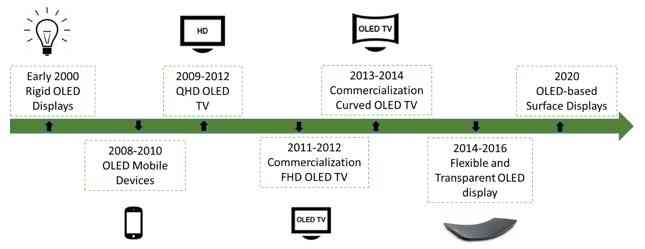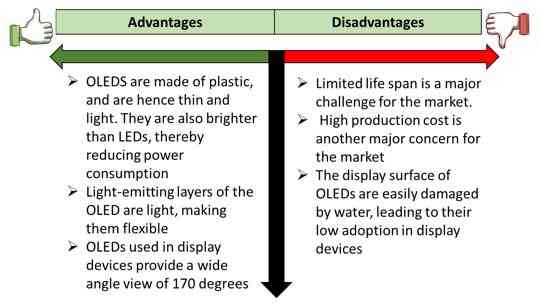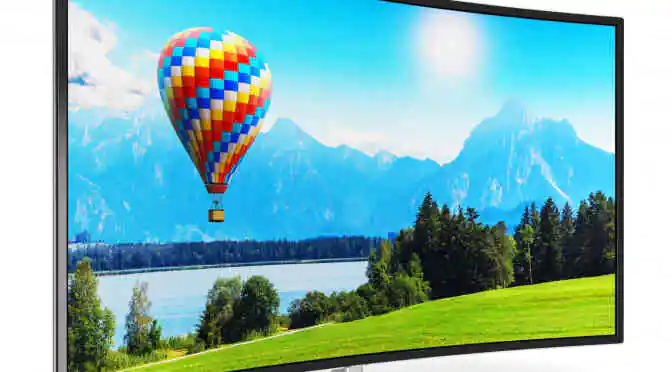OLED TV is clearly a major leap in TV technology. Thinner, lighter, and brighter than LCDs, OLEDs do not require filters to create real colors, perfect contrast, and blur-free pictures. A popular product in today’s electronic market, OLEDs are the best thing to have happened to the television industry.
Organic light-emitting diode (OLED) display, unlike liquid-crystal display (LCD) displays, does not require a separate light or colored filter. In an OLED display, every pixel act as its own light source, whereas, LCD display requires liquid crystals to create a variety of colors. This is driving the demand for OLED screen over LCD display for smartphones and TV sets. The employment of OLED technology in smartphones and TV devices enables the development of thinner designs as it has fewer layers in comparison to its LCD counterpart. This in turn, will further trigger the preference for OLED display among manufacturers. The superiority of OLED display over LCD will be one of the major OLED display market drivers.
The global OLED display market size will grow by over $21.6 billion or a CAGR of close to 25% by 2022. For more information about the global OLED TV market size, top OLED TV manufacturers and future trends in this market, please check Technavio’s Global OLED Display Market Report 2018-2022, or download your FREE OLED Display Market Report Sample now!

FIG: Evolution of the OLED technology
Pros and Cons of Buying an OLED TV

PRO: Eco-friendly product
As governments across the globe are promoting a green culture to bring down carbon emissions, OEMs are working on products to meet the new environmental standards. With its miniscule consumption of raw materials and power, OLED is an inherently eco-friendly product. The fact that its disposal is far less harmful to the environment makes it an extremely eco-friendly product.
Download related report sample for free: Global UHD TV Market 2018-2022
PRO: Proven technology
OLED technology is much better than the older technologies as it does not require backlighting. Also, the viewing angle of 180 degrees, sharp image quality, and superior contrast ratio adds to OLED’s advantage. High resolution and pixel density are other advantages of the self-emissive display technology seen in OLEDs.
CON: High cost of production
As OLED displays are yet to be commercialized it is rather difficult for manufacturers to economize the cost of production. The need for high-end equipment and technology along with low awareness of OLED products is another major impediment for low-cost production, due to which the volume of investments in this industry is low.
Download related report sample for free: Global TV Market 2017-2021
CON: Short life span of OLED materials
When compared to LCD and LED displays, OLEDs have a shorter life span of about 15,000 hours. The main reason behind this is the accumulation of nonradioactive recombination centers and luminescence quenchers in the emissive zone.
Conclusion:
According to our industry experts, the two aforementioned shortcomings of OLEDs are not major reasons for anyone to not buy an OLED TV. Major names in the market like Samsung and LG have already made huge investments to take care of these factors.
Download related report sample for free: Global IPTV Market 2017-2021
With incremental growth of close to $22 billion expected by 2022, the OLED display market is clearly active and thriving.

Yet, the final decision boils down to the discerning customer. And, thankfully, a vast majority of the customers are on-board with this newer technology. Offering a clear advantage in terms of the user experience, OLED will be the display of choice for customers, through 2019 and beyond.
Looking to better understand your target audience and OLED’s continuing preference? Check out Technavio’s industry research report on this topic (links provided below). While there, download a FREE sample report too!



